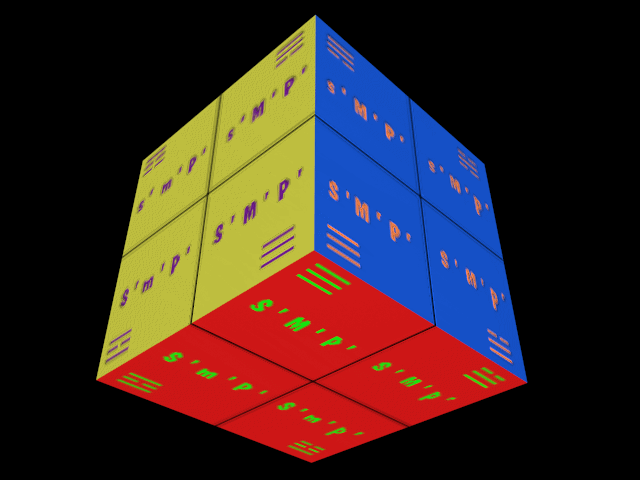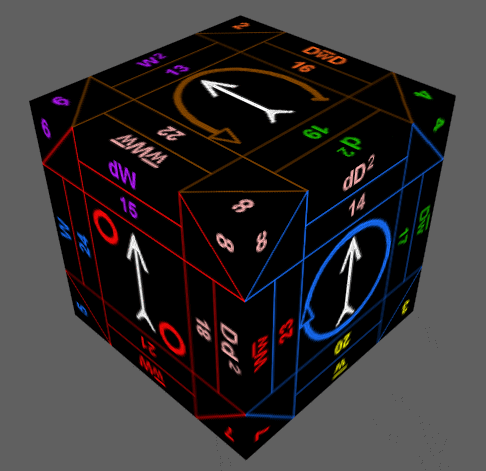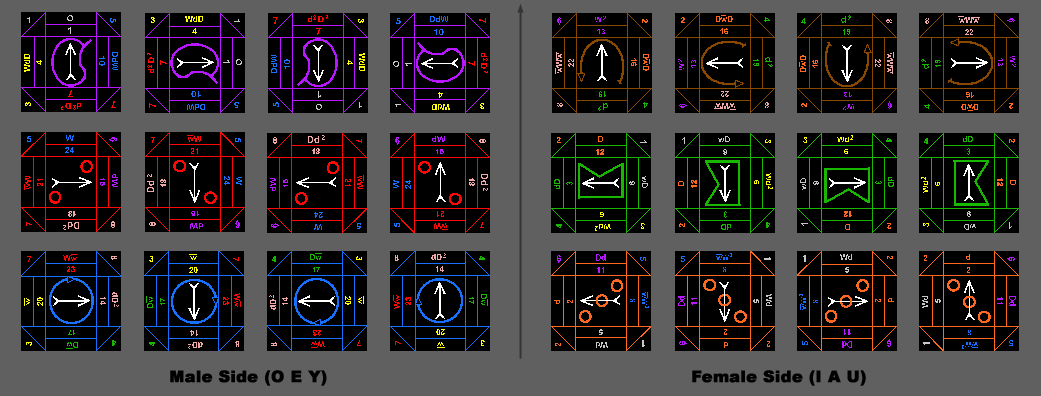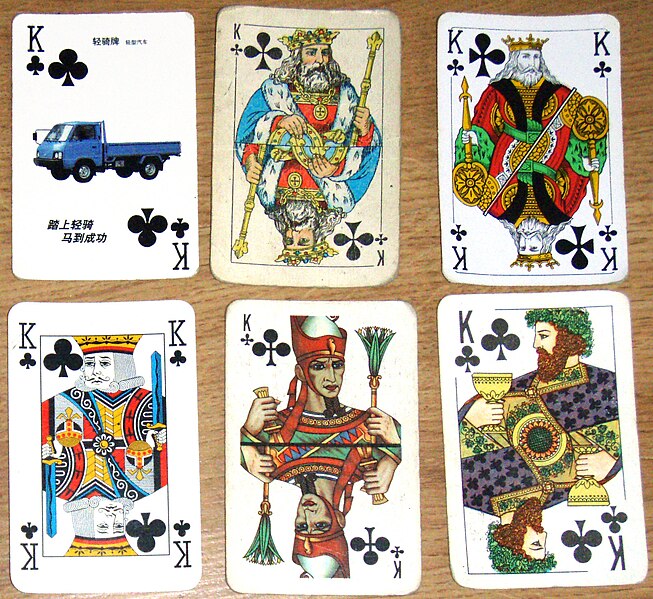Continued from part one, this will be a second look at the many purveyors of woo in the math world. Fascinating though they are...
Radiant Primes
OK, we'll start with a gentle example. This guy... might be right, it seems to check out. But his idea of taking prime numbers, converting them to another base, reversing the digits, converting that number back, and then checking if it's composite or prime and then (are you still following?) plotting the result in dots on a graph produces a picture that's pretty much the random static noise you'd expect to get with some radial lines raining down. He explains the process lucidly here. It makes a pretty cellular automata, but I don't see what he's so excited about. This isn't crank math so much as it's a fundamental failure to understand how math research works.
"God Almighty's Grand Unified Theorem" (GAGUT)
Oooooh, we have a live one! It's hard to tell if this is math though, or if the passion of this person's vision transcends the simple arts of calculus altogether. Anyway, any page written in ALLCAPS that yells "GOD!!!" this many times is a guaranteed winner. Diving deeper into the site, however, reveals a lot more ALLCAPS raving and not a hell of a lot of math. But I noticed an awful lot of focus on race (pro-black) including one link that insists God elected Obama. Then you find this:
...clicky to biggy, and you'll find the biggest equation to nutting ratio on the site, and that's just one unexplained line. Yes, I see, the capital G is God. Now what?
Radiant Primes
OK, we'll start with a gentle example. This guy... might be right, it seems to check out. But his idea of taking prime numbers, converting them to another base, reversing the digits, converting that number back, and then checking if it's composite or prime and then (are you still following?) plotting the result in dots on a graph produces a picture that's pretty much the random static noise you'd expect to get with some radial lines raining down. He explains the process lucidly here. It makes a pretty cellular automata, but I don't see what he's so excited about. This isn't crank math so much as it's a fundamental failure to understand how math research works.
"God Almighty's Grand Unified Theorem" (GAGUT)
Oooooh, we have a live one! It's hard to tell if this is math though, or if the passion of this person's vision transcends the simple arts of calculus altogether. Anyway, any page written in ALLCAPS that yells "GOD!!!" this many times is a guaranteed winner. Diving deeper into the site, however, reveals a lot more ALLCAPS raving and not a hell of a lot of math. But I noticed an awful lot of focus on race (pro-black) including one link that insists God elected Obama. Then you find this:
...clicky to biggy, and you'll find the biggest equation to nutting ratio on the site, and that's just one unexplained line. Yes, I see, the capital G is God. Now what?
Truth Evolutionism
Now this guy sounds like the Time Cube guy on Prozac.
"So sciences about largest negative action pursuit, largest happiness pursuit, largest profit pursuit and largest knowledge pursuit are unified into one: Science of Pursuit"Right, but how does that help us get laid? I confess that this guy loses me every other sentence, so I can't so much trace reasoning flaws because I can't follow the reasoning. The guy just won't slow down and let the rest of us catch up to the monologue in his head.
"In Truth Evolutionism, every existence origins from perturbation in nihility. So its ultimate goal is to find the evolution process from perturbation to existence and the best methods for expansion."um?
"Physicists have discovered least action principle, so basic natural laws are best methodology to pursue negative action. So for systems with the same mathematical expression as negative action, basic natural laws will be their best methodology."ah...
"This is an objective truth standard. Larger system won more attention, respect and even worship from human beings. You can imagine, if there were a system larger than universe, its laws will be worshiped better than "natural laws", and treated as more important truth than natural laws. With the objective truth standard, the system with the largest possibility to be observed contains ultimate truth."Dammit man, slow the hell DOWN! This sounds like you could cook up a philosophy here, if only you'd quit nouning verbs and dropping 'the's!
Return to Socrates
Right at the top, we start out with "Ideas, Philosophy, Science, Software, God, Universe, Randomness" - Which leads me to my own first theory of math cranks: If you're trying to tackle more than two big ideas in one paper, you're probably a crank. This guy has also been in business a long time, and makes reference to readers and even a message board for open discussion at one time. But, weird for an admirer of Socrates, his primary mathematical fixation seems to be on gambling. We're in luck, probability math happens to be one of my favorite fields. Anyway, he starts out attacking the lottery for not paying true odds. Correct so far; I think all lotteries should be burned to the ground. As soon as he starts rattling about betting systems, I set my Ctrl-F for "Martingale" and bingo!
Yep, crank. For those of you wondering, a Martingale system is one where you try to recover previous losses by doubling your bet or using some other complex betting pattern. The problem where all Martingales fail is that they fall against the casino concept of a "table limit":
That limit stops you from doubling your bet infinitely; eventually you'll lose big, and then you'll never get it back. And then right after Martingale you get the famous gambler's fallacy, stated so well by our "expert" here:
"What you need is a notebook and a pencil. Write down the last roulette spins, from the oldest one available to the most recent spin. Do not start playing until you have at least 42 spins on your piece of paper. I prefer a small notebook with 20 rule lines. Multiples of 10 or 20 make it easy to count quickly the number of roulette spins. Use the roulette report that follows as the template (rows and columns). "
...the gambler's fallacy, explained in Wikipedia, is the fallacy of believing that past trials dictate future trials; in other words, if the wheel comes up red six spins in a row, then the gambler's fallacy would have it that black is a good bet right now because "the law of averages" say that red has less of a chance coming up now. The problem here is that the roulette wheel has no memory! Neither does any other random device - the dice don't know which number's "turn" it is to come up, your coin does not know that it's "supposed to" come up heads next toss because it just tossed five tails in a row.
Still, this guy's a real card. He's got books he's sold, casinos he's gotten into fights with... He's got his racket, he's happy.
Well, that runs my bookmark list dry. Til next time, True Believers!















